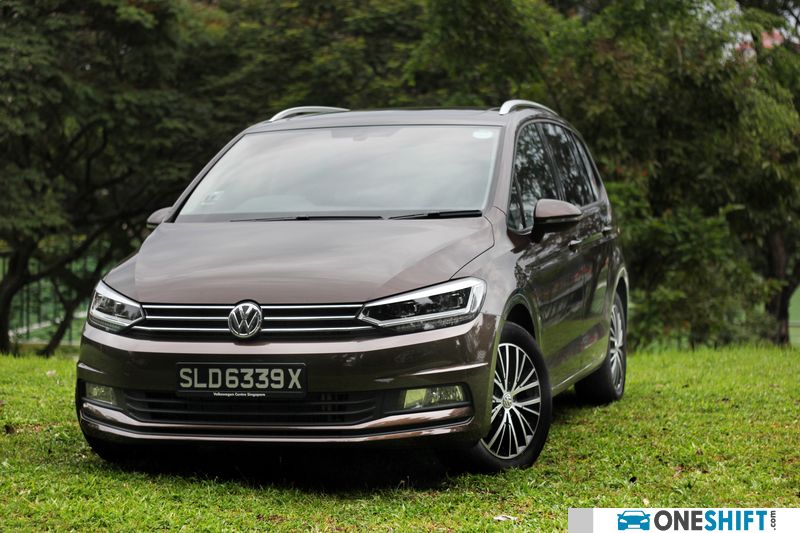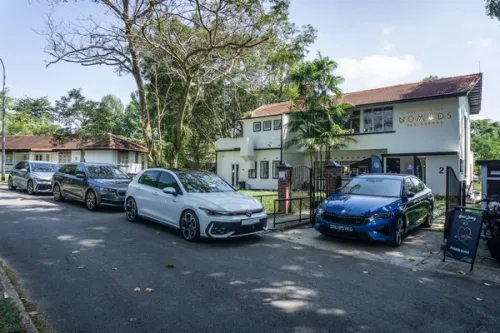Objective Practicality: Why Bigger Isn't Always Better
Buying a practical car for the family isn't just about buying the biggest car in terms of dimensions. One should also be ready to consider the ergonomics and form factor of various elements in the car. Find out which areas of practicality should you consider on top of things like boot capacity and car dimensions.

In between shopping for a new car, and watching a slew of car review videos on car models that you are considering, you will discover that the word ‘practicality’ gets thrown around a lot. That makes sense, since most cars fall into the category of people-carrying, functional modes of transportation. In most cases, the concept of practicality is presented in terms of numbers pertaining to the car’s dimensions and boot space - and it is a reasonable way to present the idea of practicality. The measure of practicality is a tricky notion though and one should be discerning when approaching the topic of practicality. What is sometimes overlooked, and is perhaps more important, is the concept of ergonomics, which loosely translates to the useability of the space, rather than just the dimensions of the space. The next time you are out searching for a new car, consider these additional aspects of practicality - because bigger isn’t always better.

During your workplace lunch break, you may sometimes overhear conversations about how someone needs a bigger car, because they need more space. The correlation is not a wrong one, but perhaps one that is a little under-developed. Case in point - a Mercedes-Benz CLA measures 4,688mm in length and can carry up to 5 passengers (barely), while a Volkswagen Touran, which measures 4,527mm in length can carry up to 7 passengers comfortably, with individual seats across the 2nd row and a very decent sized 3rd row that would put larger 7 seater SUVs to shame. The reason this is possible is because when determining cabin space and leg room, the dimension that you should be looking at is in fact, the wheelbase dimensions as opposed to the overall car dimensions. Aside from the actual wheelbase dimensions of the car, the way each automaker utilises the space within the cabin is also crucial.

Cars with similar wheelbases can feel quite different to sit in. For example, although the BMW X1 and the Mini Cooper Countryman are essentially the same car under the skin, I personally feel that the Mini feels a lot easier to get in and out of due to the rear door aperture. The mini also feels like the car with the larger legroom, although you’ll find that dimensionally, the two cars should measure up to be very similar, if not identical. There are also some lifestyle considerations at play here which might not be very apparent to you - but realise that you may not actually need a bigger car as your kids get older. 2 infant car seats with isofix anchors in the backseat of a Volkswagen Golf might be quite tight, but 2 young children on booster seats in the same car would be a breeze to pull off.

Another aspect of cabin space that is deceiving, is how SUVs always seem to feel bigger than its sedan counterparts in the same class - which is not true if you are considering legroom. What is likely true, is that SUVs typically offer much more headroom to the passengers than in traditional sedans, unless you are opting for a coupe style SUV with a sloping roofline like with the Toyota C-HR, Audi Q3 Sportback (which is absolutely stunning to look at), or a Mercedes-Benz GLC Coupe. With the elevated driving height, it is also easy to feel like you are driving a bigger car than you really are, thus adding to that “big car feel”. As as SUV’s cabin is raised up about the drivetrain, you will also often find that the rear hump commonly found in a sedan’s cabin, to be either non-existent, or minimal in an SUV, which makes it more comfortable for carrying 3 in the back.

It is important to consider who is climbing into your back seat on a regular basis for you to establish which car is most practical for your use. Your elderly parents will not enjoy climbing into the back of your Peugeot 5008 & Toyota Fortuner, nor will they enjoy stooping down and pronating their heads to get past the threshold of your very beautiful Audi A5 Sportback and its sloping roofline. They will likely enjoy climbing into a full size MPV with power doors due to the low floor height, or into your Station Wagon which will feature a slightly more forgiving rear door opening. Alternatively you can also opt for one of those mid-height crossover type SUVs like the Mercedes-Benz GLA which feel abit more like a jacked up hatchback.
Guys out there would also do well to consider how easy it is for your wife and more importantly, her wardrobe, to get in and out of the car. This is easy for us guys to overlook because we are always in pants (one form or another). But spare a thought for your beautiful wife who has to jump out of the car in her midi bodycon work dress in the middle of the CBD, while trying not to flash the whole world.

On a slightly non-related topic, I also happen to think that the only way to show up at a valet / hotel porch / gala dinner / etc… is in a sedan height car. To me, an SUV (no matter how expensive) is simply not suitable for a formal occasion. It is a little bit like wearing balenciaga sneakers instead of formal dress shoes - it just doesn’t work.

For anyone who has ever loaded a child into a car seat will know that this can either be a breeze of an experience, or an excruciating one, depending on what car you are loading the child and the car seat into. Height plays a big part in this equation, as it will determine how much you have to bend to accomplish the task. Loading a child or a child seat will almost always require you to lower your head past the threshold of the door opening, so the less you have to bend to achieve this, the better for your back, and the easier it will be. Compact to Midsize SUVs serve this purpose exceptionally well and on more squarish cars like the Volkswagen Tiguan, Cupra Ateca or a Skoda Karoq, the task is made even easier. Sedans are also reasonably easy to load a child seat into, so long as you don’t have an overly aggressive sloping roofline to deal with. Suffice to say though, this area is where MPVs of all sizes, especially those with power doors really excel.
The other factor that influences how easy it is to fit a child seat into the back of your car, is the accessibility of the car’s ISOFIX anchor points. In most continental cars, the ISOFIX points are clearly demarcated and accessible by removing or lifting a simple plastic tab that would normally conceal the ISOFIX point. The anchor points are also fitted with this sort of trunking, which ensures that your child seat doesn’t damage the leather while you are trying to fit the child seat in. With Japanese and Korean cars however, there is still this habit of hiding the ISOFIX anchor points. Not only are the anchor points hidden, but they are also embedded deep within the crack between the rear backrest and the rear seat cushion. Needless to say, it is unpleasant to have to wiggle your finger through this crack to feel around for the metal anchor points. And after you are done with that, you will then need to stab the metal anchors from the child seat, into this crack and then hope you catch the metal anchor point on the other side of this…crack. The experience is all quite unpleasant, feels cheap, takes a long time, and is ultimately very haphazard.

One of the benchmarks of practicality in modern vehicles is their ability to haul cargo in their boot. The general sentiment is that the larger the boot in terms of litres, the better the boot. While that may not be wrong sentiment, it is also equally important to consider other aspects of boot ergonomics on top of considering only boot capacity. For one, the boot aperture is of significant importance if you are looking to transport boxy or bulky items, such as cartons or a bicycle. This is because the boot aperture would determine if your package will even be able to cross the boot threshold. If the item can’t cross the threshold, you won’t be able to transport it, even if your car may have a massive boot. For this reason, squarish shaped boots found in sedans across the VAG range, as well as in SUVs, and even some hatchbacks, may prove to be easier to load and carry items than its larger sedan counterparts. Sedans like the Skoda Octavia would buck that trend, and boasts impressive Estate Car-rivalling cargo space, and a liftback-style bootlid for easier access.

In part, the considerations that come with boot practicality should always be pegged to what sort of items you will be carrying. If your car is strictly for use in Singapore, and you don’t ever drive up North with the family, you may not need as big a boot as you think. Specifically in Singapore, apart from the odd trip to Ikea once in a blue moon, your main boot usage will revolve around groceries. If you have a young family, then you might need the ability to carry that extra stroller. Even if you did carry other larger items like your golf bag, or you did take occasional short trips up North where you might need to carry some duffle bags, it is extremely unlikely that you will be doing all those things at the same time. In reality then, a boot capacity of between 350 - 450 litres would serve you well for most applications in the local context (the Mitsubishi Attrage has a 450 litre boot).

In that vein, it could actually be worthwhile to look at cars which sacrifice a little bit of boot space for increased legroom and comfort in the cabin, such as the Mini Countryman and Ssangyong Tivoli, both of which have rear legroom that feels larger than other cars in their respective classes. On most days, where you might be shuttling your kids to school and grabbing a few bags of groceries, such a setup might be the more practical solution from a day to day standpoint.
Credits:


Get the Best Price for your used car
from 500+ dealers in 24 hours

- Convenient and Hassle-Free
- Consumer Protection
Transparent Process
With No Obligation








